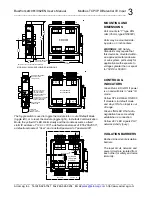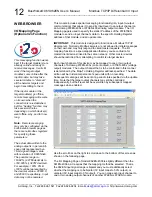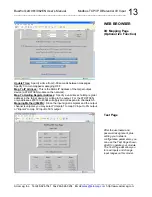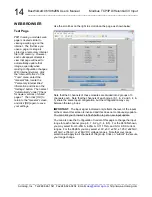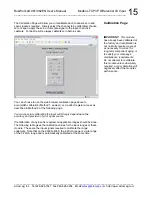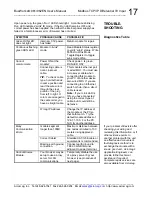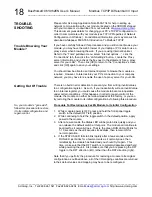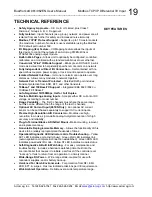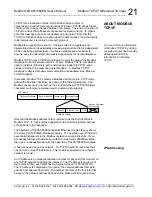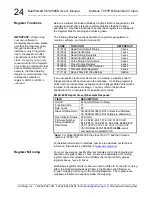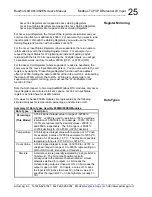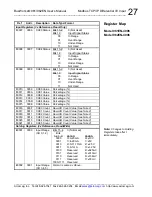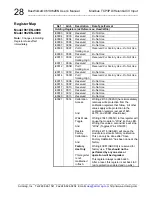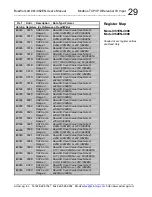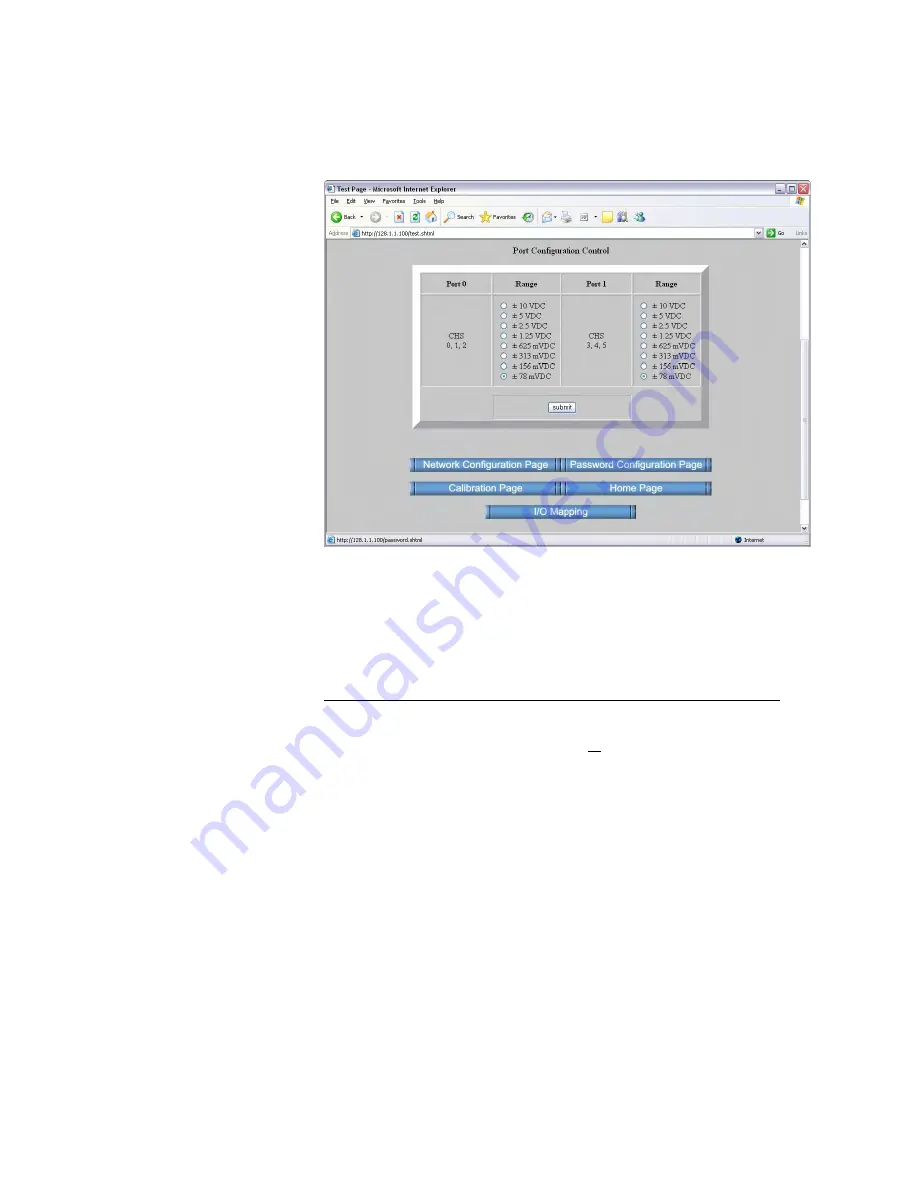
BusWorks® 961/962EN User’s Manual Modbus TCP/IP Differential I/V Input
__________________________________________________________________
_______________________________________________________________________________________
Acromag, Inc. Tel:248-624-1541 Fax:248-624-9234 Email:
http://www.acromag.com
14
Use the scroll bar on the right to scroll down the page as shown below:
Note that the 6 channels of these modules are divided into 2 groups of 3
channels each. Note that the channels of each group (0, 1, & 2, and 3, 4, &
5) share the same input configuration, but the configuration may vary
between the two groups.
IMPORTANT:
The input signal indicated only reflects the level of the inputs
at the moment this screen is invoked and this does not continuously update.
You can click your browser’s refresh button to get a new input update.
You can also use the Configuration Control of this page to change the input
range for each channel group (0, 1, & 2 or 3, 4, & 5). For the 961EN shown,
you may select from 0-20mA, 4-20mA, 0-11.17mA, and 0-1mA DC current
ranges. For the 962EN, you may select ±10V, ±5V, ±2.5V, ±1.25V, ±625mV,
±313mV, ±156mV, or ±78mV DC voltage ranges. Note that your range
selection will apply to all channels of the group. Click on “submit” to execute
your range change.
WEB BROWSER
Test Page
TIP:
Viewing a module’s web
page is treated similar to
viewing a web page on the
internet. The first time you
open a page, its image is
stored as a temporary internet
file in PC memory. However,
each subsequent attempt to
view that page will need to
automatically update that
image, especially when
making configuration changes.
With Internet Explorer, click
the “Internet Options” of the
“Tools” menu, select the
“General” tab, locate the
“Temporary Internet Files”
information and click on the
“Settings” button. Then select
“Automatically” under “Check
for newer versions of stored
pages:”. Then click [OK] to
return to the “General” screen,
and click [OK] again to save
your settings.



